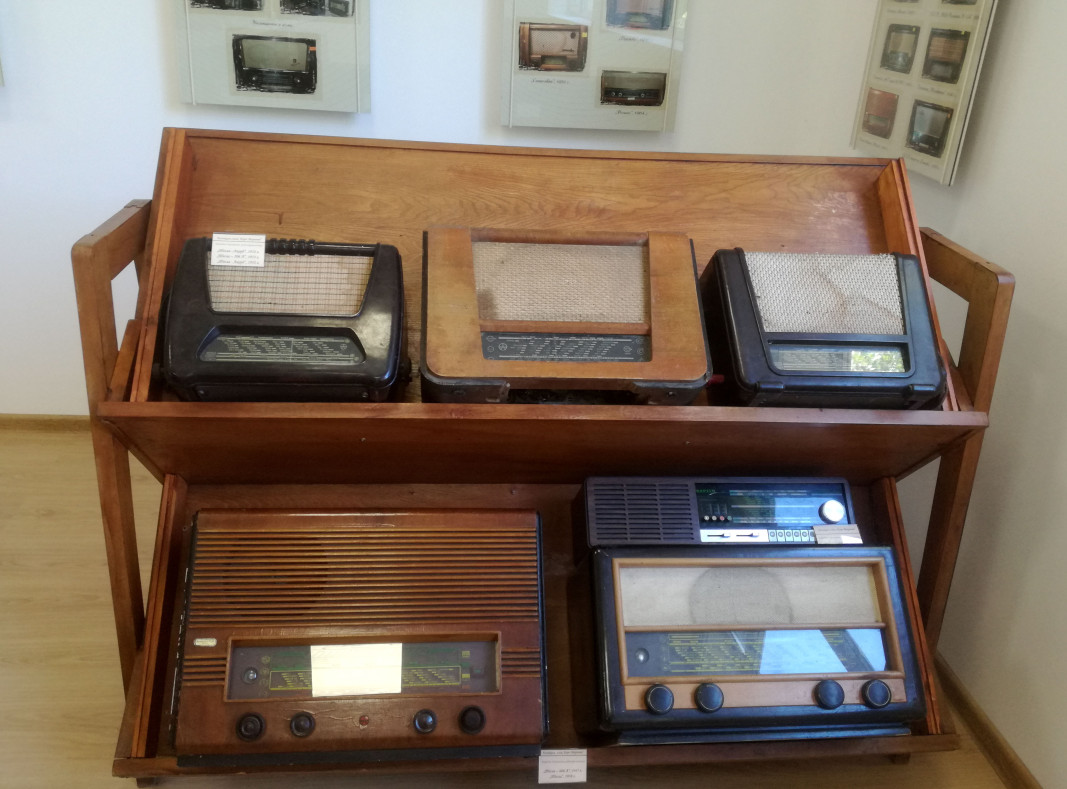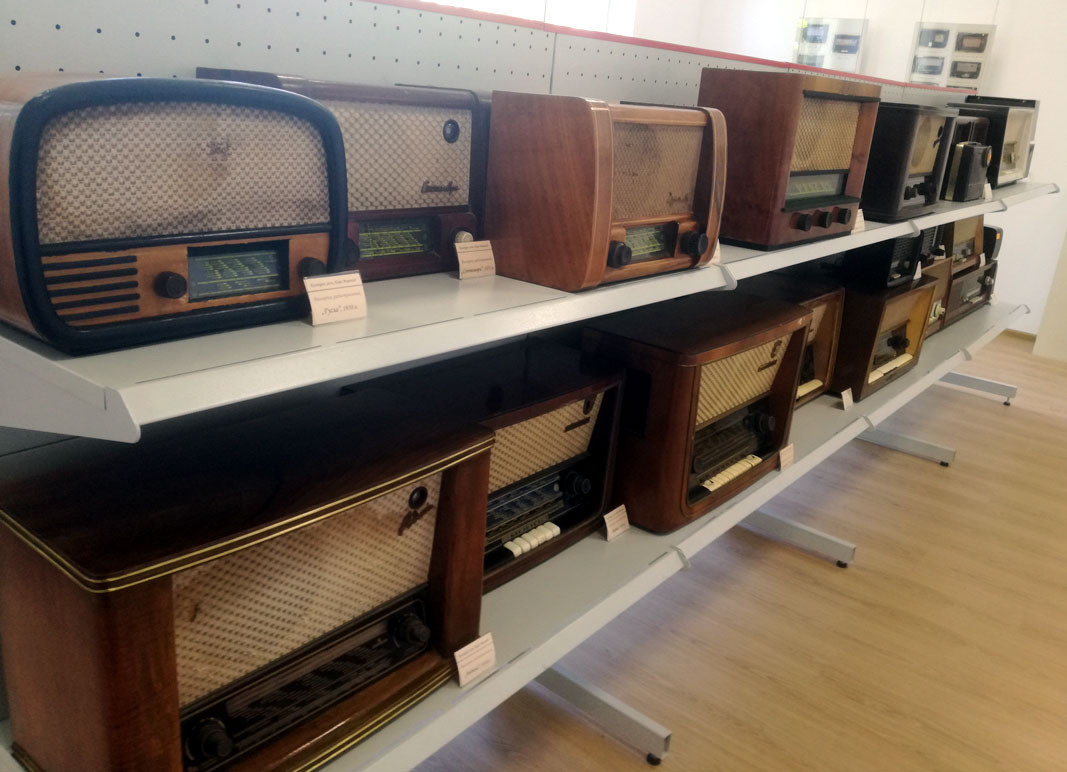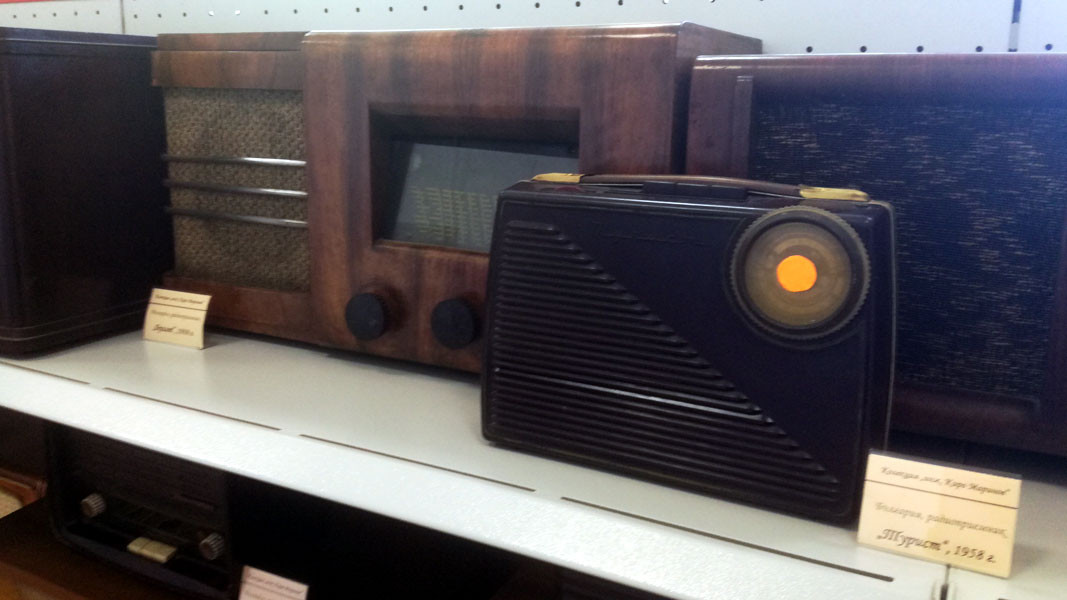More than 80 old radios are on display at the Historical Museum in the town of Polski Trambesh (North Bulgaria) until the end of October. The place for this interesting exposition was not chosen randomly:
“Each historical museum aims to present something connected with the history and the culture of the region and radios were part of people’s lives, - Associate Professor Hristo Haritonov, Director of the Historical Museum in Polski Trambesh told Radio Bulgaria. – I remember those early years when there was a special room for the radio in our homes. People were taking special care of their radios. They would always cover them with an embroidered tablecloth and put a flowerpot on them. This place was a kind of an “altar” towards information and a link with the rest of the world.”
Part of the exposition is dedicated to the Bulgarian National Radio, which is among the organizers of the exhibition. It impresses with the archival photos of all famous Bulgarians who went through the studios of the BNR, artists, radio announcers and events relevant to the history of the radio.
 “The help we received from the Bulgarian National Radio is extremely valuable, because our museum is the youngest Historical Museum in the country, - Associate Professor Haritonov added. – We included information about the time the public broadcaster was established (1935), as well as information about the regional radio stations. Of course, great attention is paid to the collection of engineer Kiro Marinov.”
“The help we received from the Bulgarian National Radio is extremely valuable, because our museum is the youngest Historical Museum in the country, - Associate Professor Haritonov added. – We included information about the time the public broadcaster was established (1935), as well as information about the regional radio stations. Of course, great attention is paid to the collection of engineer Kiro Marinov.”
 The collector provided for the purpose of the exhibition 70 radios made before and after World War II in Bulgaria, West Germany (the former Federal Republic of Germany), East Germany (the former German Democratic Republic), former Czechoslovakia and the former Soviet Union.
The collector provided for the purpose of the exhibition 70 radios made before and after World War II in Bulgaria, West Germany (the former Federal Republic of Germany), East Germany (the former German Democratic Republic), former Czechoslovakia and the former Soviet Union.
After World War II, Bulgaria placed among the leading countries in the manufacture of radio devices.
 “Each radio has a short history, engineer Marinov said. - I discovered, above all, the contribution of Bulgarian people and their desire to show their taste of progress and individuality through the radios they kept at home. Many people even sold their farmland, in order to buy a radio. These radios were kept at a visible point for decades and held dear memories.”
“Each radio has a short history, engineer Marinov said. - I discovered, above all, the contribution of Bulgarian people and their desire to show their taste of progress and individuality through the radios they kept at home. Many people even sold their farmland, in order to buy a radio. These radios were kept at a visible point for decades and held dear memories.”
English version: Kostadin Atanasov
Photos: Zdravka MaslyankovaOn November 30, the Bulgarian Orthodox Church honors the memory of St. Apostle Andrew . In Bulgaria the saint is known as Saint Andrey and the folk holiday as Andreevden . Saint Andrew’s Day gives the start to the series of winter holidays..
The head of the statue of Tyche, the goddess of Philippopolis, has been discovered in the Episcopal Basilica in Plovdiv, said the head of the excavations Lyubomir Merdzhanov. According to him, this is an extremely rare artefact that has been awaited..
105 years ago, on November 27, 1919, a treaty was signed in the Parisian suburb of Neuilly-sur-Seine, officially ending Bulgaria's participation in World War I (1914-1918). Historians define the document as "another national..

+359 2 9336 661
